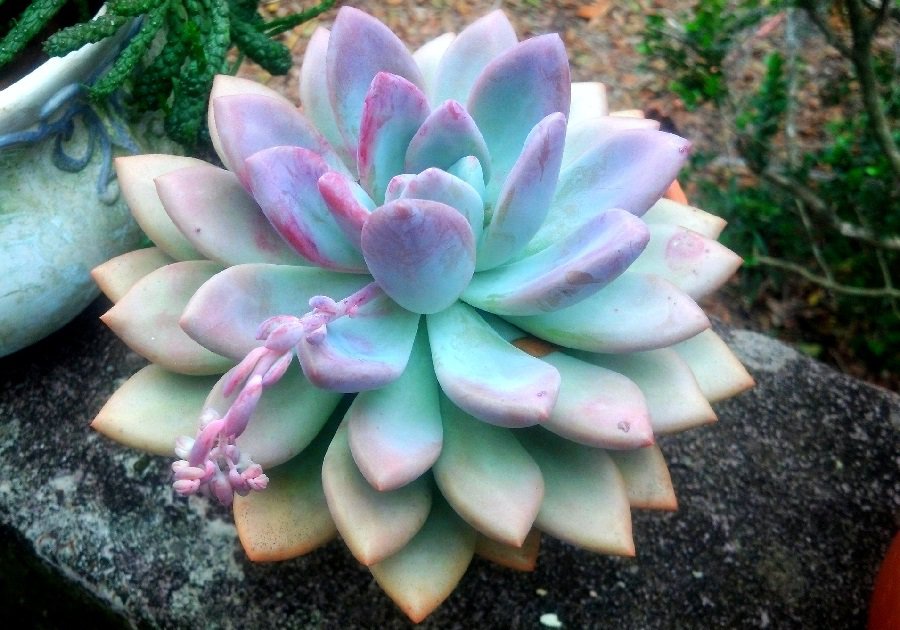Differentiating Echeveria from Pachyphytum: What You Need to Know
Do you ever get confused between echeveria and pachyphytum succulents? With their plump leaves and rosette shapes, it’s no wonder they’re mixed up sometimes! But don’t worry, this guide will make it super simple to spot the differences between these two succulent cousins. Keep reading to become an expert!
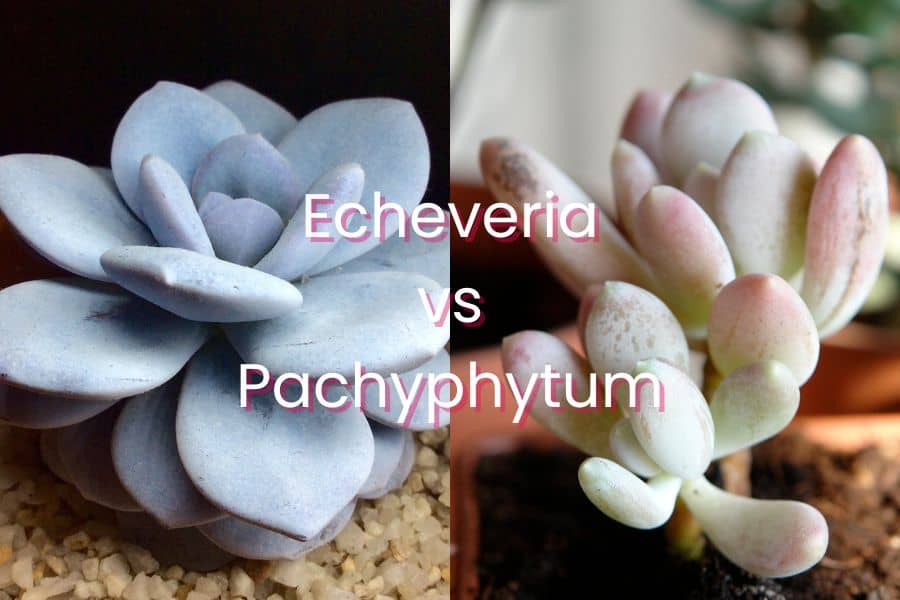
Contents
Echeveria vs Pachyphytum: Differences
While echeveria and pachyphytum do share some similarities, there are a few key differences that set them apart:
1. Where They’re From
Pachyphytum succulents are native to Mexico, growing naturally between 6,500-16,000 feet above sea level. Meanwhile, echeveria plants originally came from northwestern South America, Mexico, and Central America.
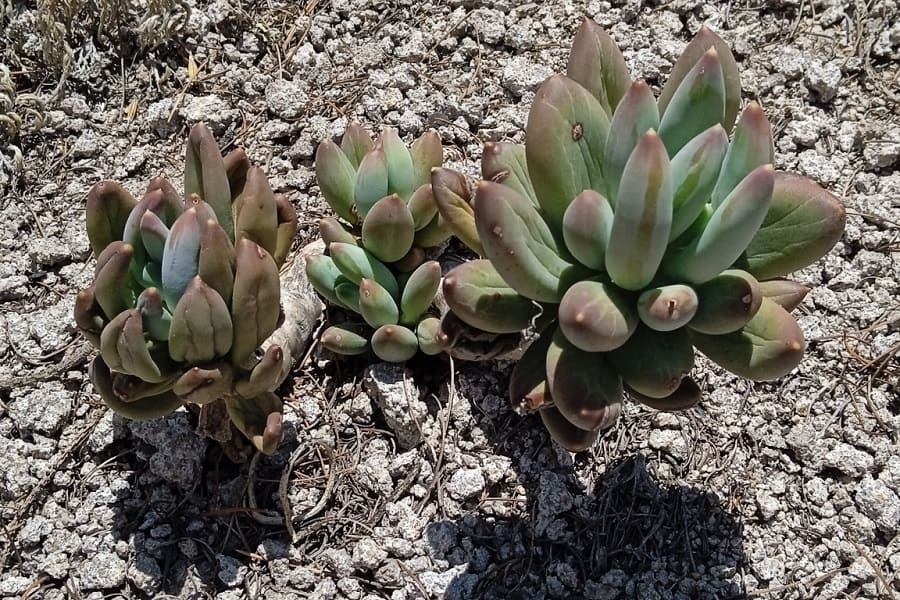
2. Number of Species
The echeveria family is much larger, with at least 150 different species and hundreds of hybrids. Pachyphytum only has around 20 species.
3. What They Look Like
Echeveria plants grow tight rosettes of thin, pointy leaves clustered at the tips of short stems. The center leaves are often brightly colored. Pachyphytum succulents grow in clumps from stemmed rosettes too, but their leaves are plumper and more juicy-looking. Pachyphytum leaves frequently have a powdery white coating and can be purple, green or orange.
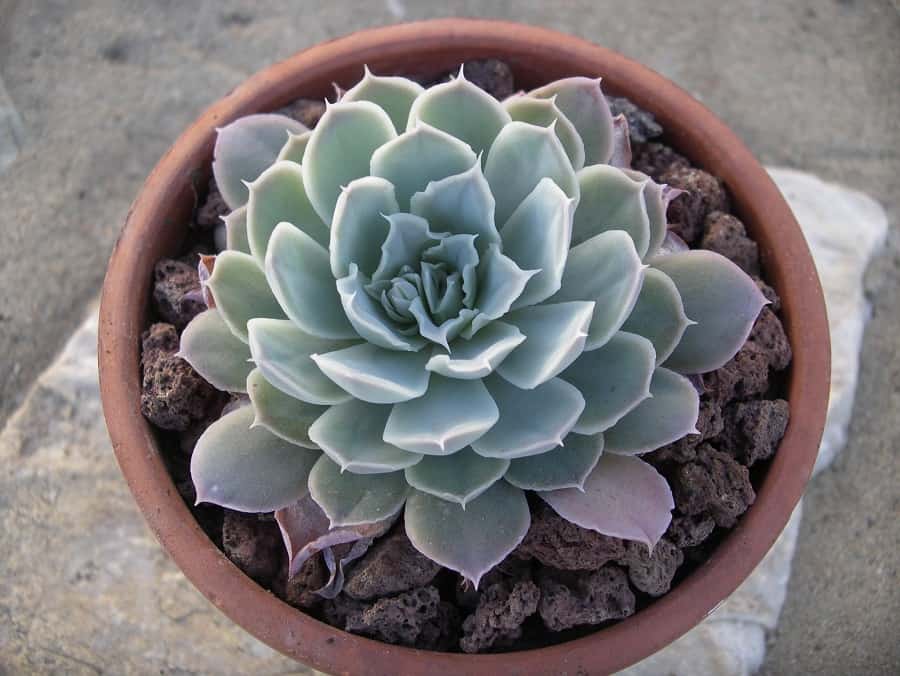
Related Posts:
Echeveria vs Graptoveria
Echeveria vs Aeonium
Echeveria vs Sempervivum
Echeveria vs Sedum
Echeveria vs Dudleya
Echeveria vs Pachyphytum: Similarities
Despite their differences, echeveria and pachyphytum do have some traits in common:
1. Flowering
Both succulent types bloom with flowers in late spring and early summer, sometimes into fall too. Their flowers can be bell-shaped in shades of red, green or white.
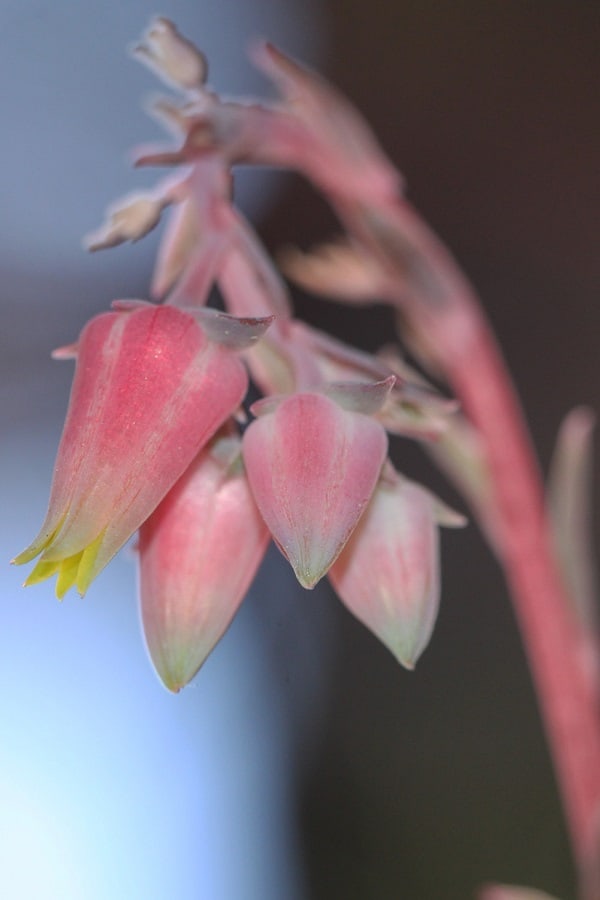
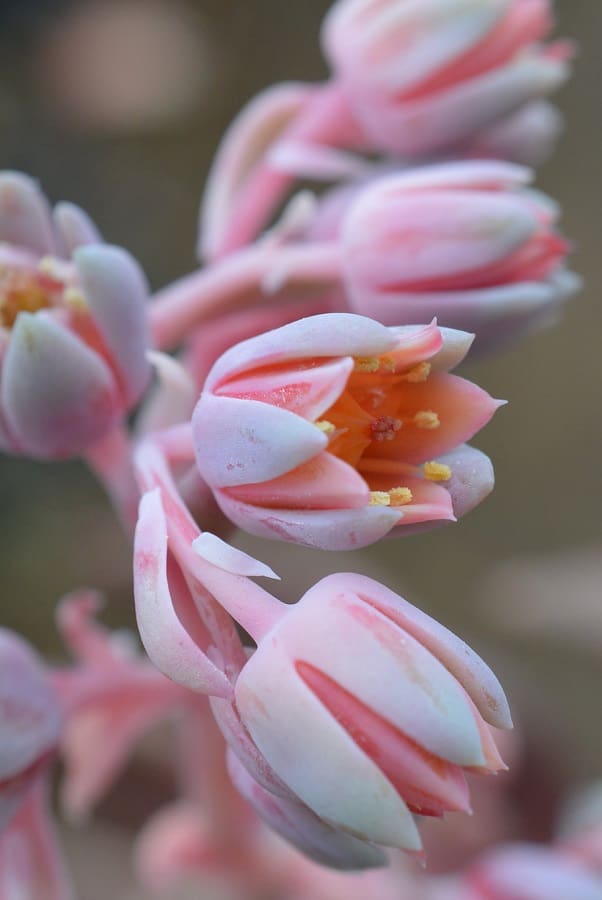
2. General Appearance
While their leaf shapes differ, both echeveria and pachyphytum grow in rosette forms with brightly colored, fleshy leaves.
3. Popular Houseplants
Thanks to their easy care and vibrant looks, both succulents make great ornamental plants for homes and gardens.
How to Grow Echeveria and Pachyphytum
If you want to add some echeveria or pachyphytum to your indoor or outdoor garden, here are some basic care tips:
Echeveria
- Plant in well-draining cactus/succulent soil or add sand/perlite to improve drainage
- Use an unglazed pot with drainage holes to prevent overwatering
- Provide at least 6 hours of direct sunlight per day
- Allow soil to fully dry between waterings and avoid getting leaves wet
- Grows best in hot, dry climates around 70°F
- Repot in fresh soil each spring if needed
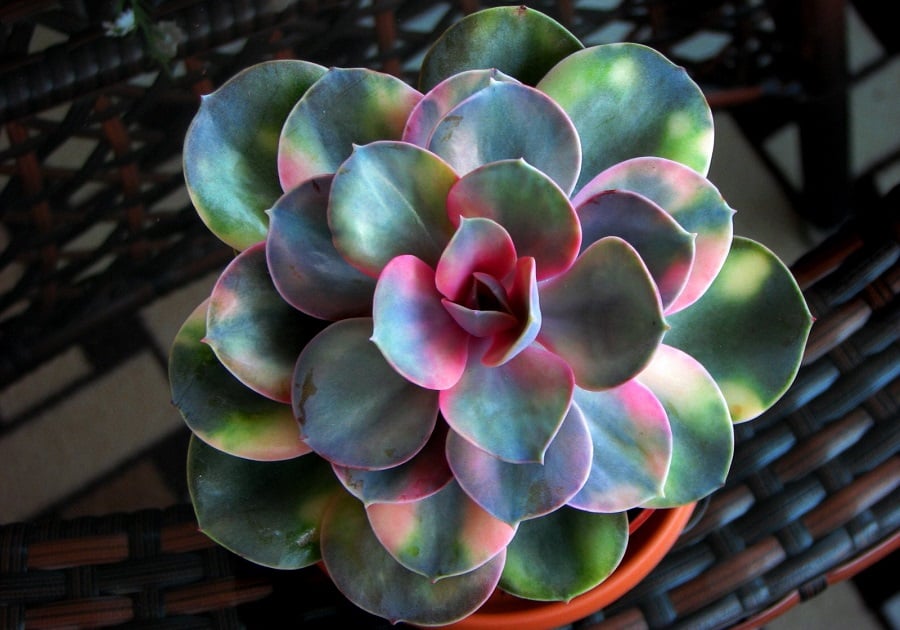
Pachyphytum
- Also needs well-draining cactus/succulent soil
- Can tolerate partial shade but does best in full sun
- Water only when soil is completely dry, don’t wet leaves
- May need slightly more water in winter during active growth
- Avoid freezing temperatures below 20°F
- Does best between 45-90°F
